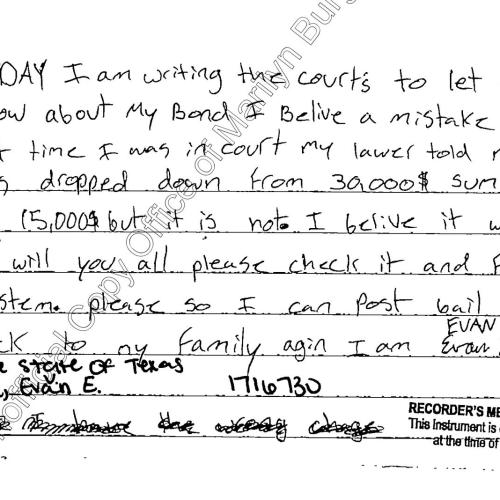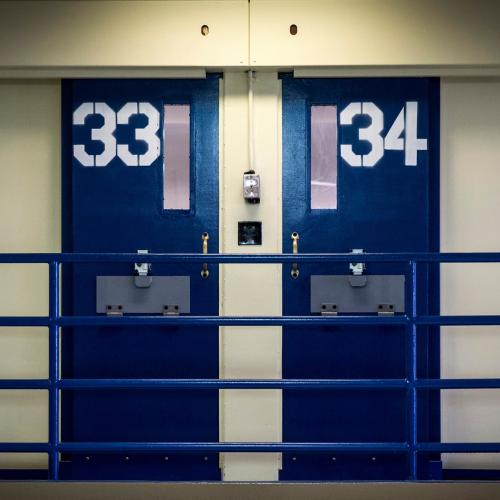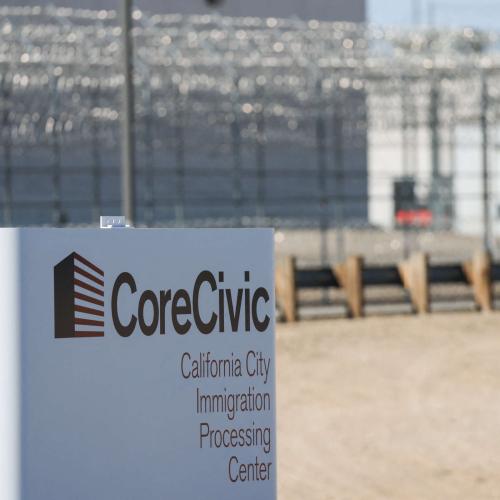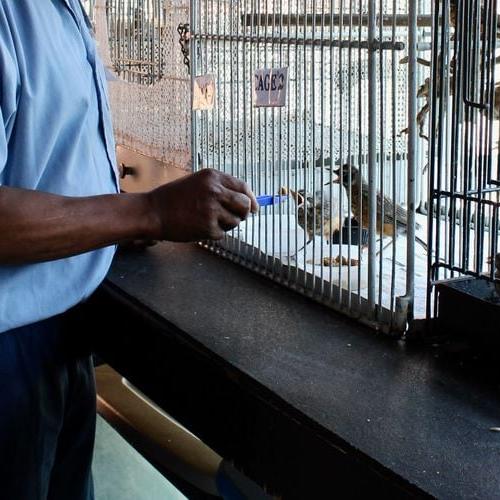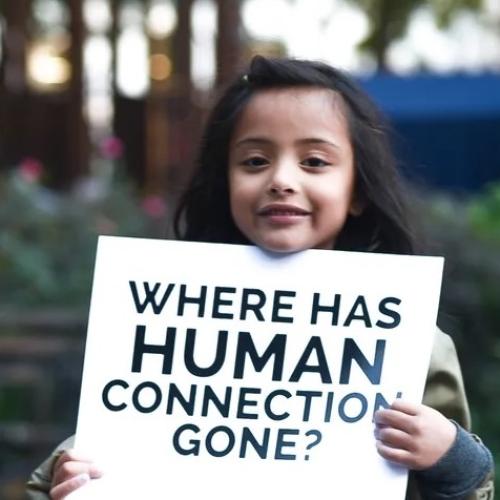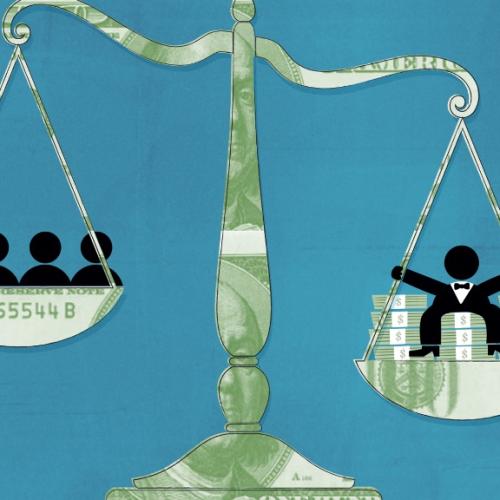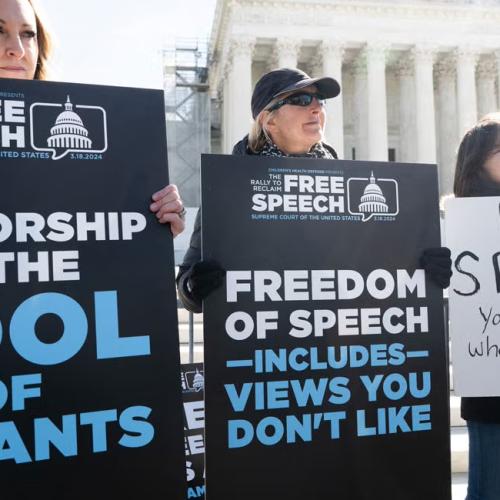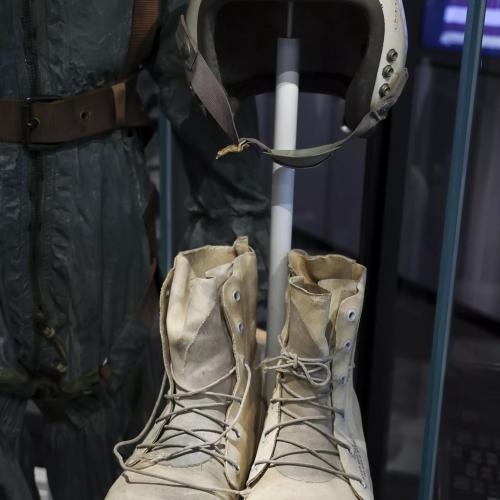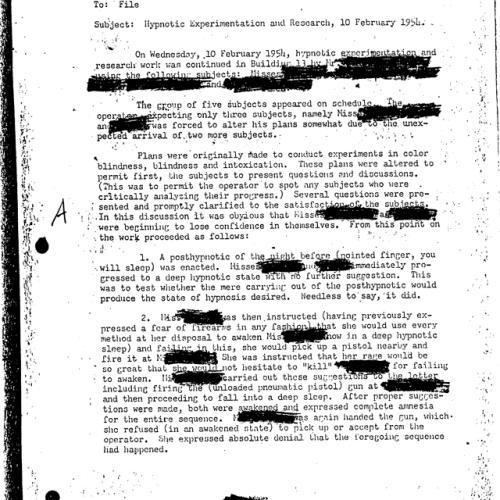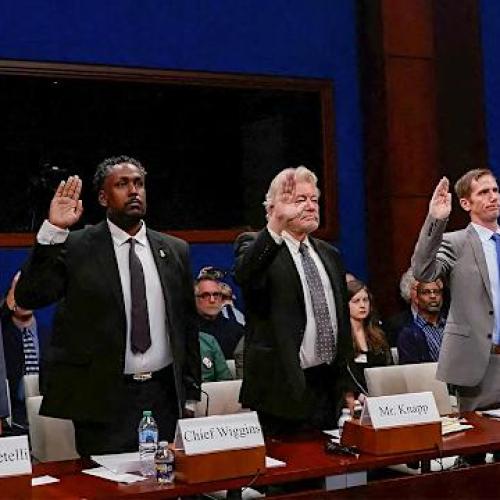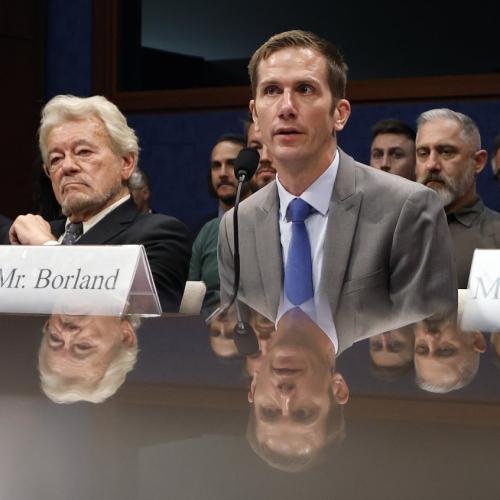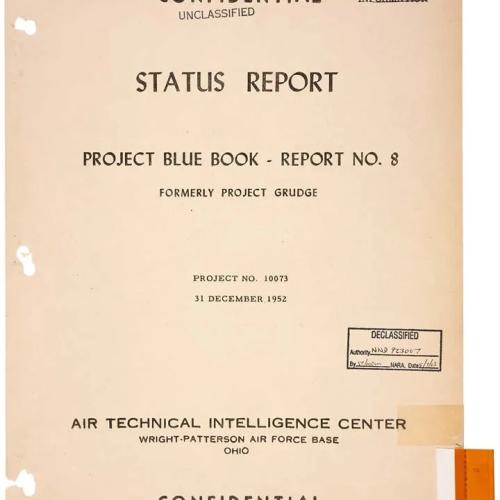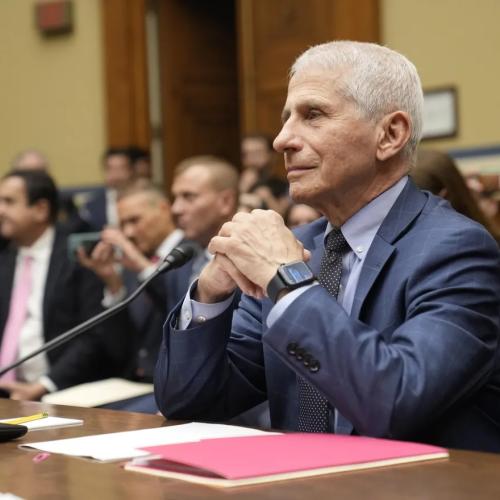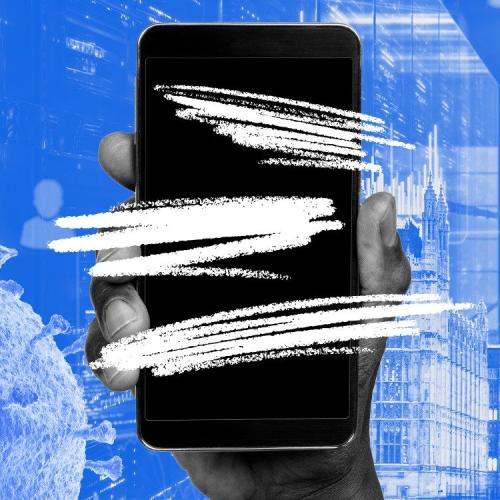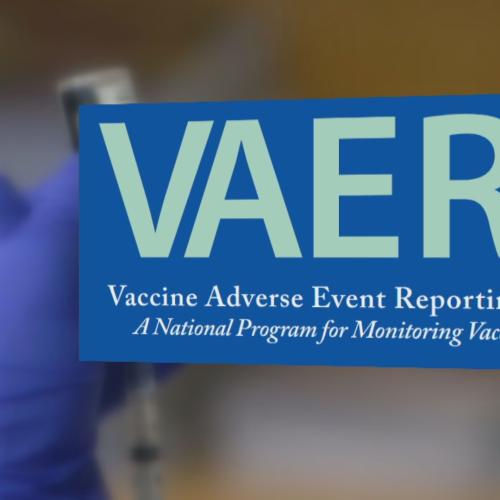Privacy News Stories
Below are key excerpts of revealing news articles on privacy and mass surveillance issues from reliable news media sources. If any link fails to function, a paywall blocks full access, or the article is no longer available, try these digital tools.
Big tech companies have spent vast sums of money honing algorithms that gather their users’ data and scour it for patterns. One result has been a boom in precision-targeted online advertisements. Another is a practice some experts call “algorithmic personalized pricing,” which uses artificial intelligence to tailor prices to individual consumers. The Federal Trade Commission uses a more Orwellian term for this: “surveillance pricing.” In July the FTC sent information-seeking orders to eight companies that “have publicly touted their use of AI and machine learning to engage in data-driven targeting,” says the agency’s chief technologist Stephanie Nguyen. Consumer surveillance extends beyond online shopping. “Companies are investing in infrastructure to monitor customers in real time in brick-and-mortar stores,” [Nguyen] says. Some price tags, for example, have become digitized, designed to be updated automatically in response to factors such as expiration dates and customer demand. Retail giant Walmart—which is not being probed by the FTC—says its new digital price tags can be remotely updated within minutes. When personalized pricing is applied to home mortgages, lower-income people tend to pay more—and algorithms can sometimes make things even worse by hiking up interest rates based on an inadvertently discriminatory automated estimate of a borrower’s risk rating.
Note: For more along these lines, see concise summaries of deeply revealing news articles on AI and corporate corruption from reliable major media sources.
Some renters may savor the convenience of “smart home” technologies like keyless entry and internet-connected doorbell cameras. But tech companies are increasingly selling these solutions to landlords for a more nefarious purpose: spying on tenants in order to evict them or raise their rent. Teman, a tech company that makes surveillance systems for apartment buildings ... proposes a solution to a frustration for many New York City landlords, who have tenants living in older apartments that are protected by a myriad of rent control and stabilization laws. The company’s email suggests a workaround: “3 Simple Steps to Re-Regulate a Unit.” First, use one of Teman’s automated products to catch a tenant breaking a law or violating their lease, such as by having unapproved subletters or loud parties. Then, “vacate” them and merge their former apartment with one next door or above or below, creating a “new” unit that’s not eligible for rent protections. “Combine a $950/mo studio and $1400/mo one-bedroom into a $4200/mo DEREGULATED two-bedroom,” the email enticed. Teman’s surveillance systems can even “help you identify which units are most-likely open to moving out (or being evicted!).” Two affordable New York City developments made headlines when tenants successfully organized to stop their respective owners’ plans to install facial recognition systems: Atlantic Towers in Brooklyn and Knickerbocker Village in the Lower East Side.
Note: For more along these lines, see concise summaries of deeply revealing news articles on AI and corporate corruption from reliable major media sources.
Surveillance technologies have evolved at a rapid clip over the last two decades — as has the government’s willingness to use them in ways that are genuinely incompatible with a free society. The intelligence failures that allowed for the attacks on September 11 poured the concrete of the surveillance state foundation. The gradual but dramatic construction of this surveillance state is something that Republicans and Democrats alike are responsible for. Our country cannot build and expand a surveillance superstructure and expect that it will not be turned against the people it is meant to protect. The data that’s being collected reflect intimate details about our closely held beliefs, our biology and health, daily activities, physical location, movement patterns, and more. Facial recognition, DNA collection, and location tracking represent three of the most pressing areas of concern and are ripe for exploitation. Data brokers can use tens of thousands of data points to develop a detailed dossier on you that they can sell to the government (and others). Essentially, the data broker loophole allows a law enforcement agency or other government agency such as the NSA or Department of Defense to give a third party data broker money to hand over the data from your phone — rather than get a warrant. When pressed by the intelligence community and administration, policymakers on both sides of the aisle failed to draw upon the lessons of history.
Note: For more along these lines, see concise summaries of deeply revealing news articles on government corruption and the disappearance of privacy from reliable major media sources.
Data breaches are a seemingly endless scourge with no simple answer, but the breach in recent months of the background-check service National Public Data illustrates just how dangerous and intractable they have become. In April, a hacker known for selling stolen information, known as USDoD, began hawking a trove of data on cybercriminal forums for $3.5 million that they said included 2.9 billion records and impacted “the entire population of USA, CA and UK.” As the weeks went on, samples of the data started cropping up as other actors and legitimate researchers worked to understand its source and validate the information. By early June, it was clear that at least some of the data was legitimate and contained information like names, emails, and physical addresses in various combinations. When information is stolen from a single source, like Target customer data being stolen from Target, it's relatively straightforward to establish that source. But when information is stolen from a data broker and the company doesn't come forward about the incident, it's much more complicated to determine whether the information is legitimate and where it came from. Typically, people whose data is compromised in a breach—the true victims—aren’t even aware that National Public Data held their information in the first place. Every trove of information that attackers can get their hands on ultimately fuels scamming, cybercrime, and espionage.
Note: Clearview AI scraped billions of faces off of social media without consent. At least 600 law enforcement agencies were tapping into its database of 3 billion facial images. During this time, Clearview was hacked and its entire client list — which included the Department of Justice, U.S. Immigration and Customs Enforcement, Interpol, retailers and hundreds of police departments — was leaked to hackers.
A US federal appeals court ruled last week that so-called geofence warrants violate the Fourth Amendment’s protections against unreasonable searches and seizures. Geofence warrants allow police to demand that companies such as Google turn over a list of every device that appeared at a certain location at a certain time. The US Fifth Circuit Court of Appeals ruled on August 9 that geofence warrants are “categorically prohibited by the Fourth Amendment” because “they never include a specific user to be identified, only a temporal and geographic location where any given user may turn up post-search.” In other words, they’re the unconstitutional fishing expedition that privacy and civil liberties advocates have long asserted they are. Google ... is the most frequent target of geofence warrants, vowed late last year that it was changing how it stores location data in such a way that geofence warrants may no longer return the data they once did. Legally, however, the issue is far from settled: The Fifth Circuit decision applies only to law enforcement activity in Louisiana, Mississippi, and Texas. Plus, because of weak US privacy laws, police can simply purchase the data and skip the pesky warrant process altogether. As for the appellants in the case heard by the Fifth Circuit, well, they’re no better off: The court found that the police used the geofence warrant in “good faith” when it was issued in 2018, so they can still use the evidence they obtained.
Note: Read more about the rise of geofence warrants and its threat to privacy rights. For more along these lines, see concise summaries of deeply revealing news articles on Big Tech and the disappearance of privacy from reliable major media sources.
If you appeared in a photo on Facebook any time between 2011 and 2021, it is likely your biometric information was fed into DeepFace — the company’s controversial deep-learning facial recognition system that tracked the face scan data of at least a billion users. That's where Texas Attorney General Ken Paxton comes in. His office secured a $1.4 billion settlement from Meta over its alleged violation of a Texas law that bars the capture of biometric data without consent. Meta is on the hook to pay $275 million within the next 30 days and the rest over the next four years. Why did Paxton wait until 2022 — a year after Meta announced it would suspend its facial recognition technology and delete its database — to go up against the tech giant? If our AG truly prioritized privacy, he'd focus on the lesser-known companies that law enforcement agencies here in Texas are paying to scour and store our biometric data. In 2017, [Clearview AI] launched a facial recognition app that ... could identify strangers from a photo by searching a database of faces scraped without consent from social media. In 2020, news broke that at least 600 law enforcement agencies were tapping into a database of 3 billion facial images. Clearview was hit with lawsuit after lawsuit. That same year, the company was hacked and its entire client list — which included the Department of Justice, U.S. Immigration and Customs Enforcement, Interpol, retailers and hundreds of police departments — was leaked.
Note: For more along these lines, see concise summaries of deeply revealing news articles on AI and Big Tech from reliable major media sources.
Peregrine ... is essentially a super-powered Google for police data. Enter a name or address into its web-based app, and Peregrine quickly scans court records, arrest reports, police interviews, body cam footage transcripts — any police dataset imaginable — for a match. It’s taken data siloed across an array of older, slower systems, and made it accessible in a simple, speedy app that can be operated from a web browser. To date, Peregrine has scored 57 contracts across a wide range of police and public safety agencies in the U.S., from Atlanta to L.A. Revenue tripled in 2023, from $3 million to $10 million. [That will] triple again to $30 million this year, bolstered by $60 million in funding from the likes of Friends & Family Capital and Founders Fund. Privacy advocates [are] concerned about indiscriminate surveillance. “We see a lot of police departments of a lot of different sizes getting access to Real Time Crime Centers now, and it's definitely facilitating a lot more general access to surveillance feeds for some of these smaller departments that would have previously found it cost prohibitive,” said Beryl Lipton ... at the Electronic Frontier Foundation (EFF). “These types of companies are inherently going to have a hard time protecting privacy, because everything that they're built on is basically privacy damaging.” Peregrine technology can also enable “predictive policing,” long criticized for unfairly targeting poorer, non-white neighborhoods.
Note: Learn more about Palantir's involvement in domestic surveillance and controversial military technologies. For more along these lines, see concise summaries of deeply revealing news articles on police corruption and the disappearance of privacy from reliable major media sources.
In 2021, parents in South Africa with children between the ages of 5 and 13 were offered an unusual deal. For every photo of their child’s face, a London-based artificial intelligence firm would donate 20 South African rands, about $1, to their children’s school as part of a campaign called “Share to Protect.” With promises of protecting children, a little-known group of companies in an experimental corner of the tech industry known as “age assurance” has begun engaging in a massive collection of faces, opening the door to privacy risks for anyone who uses the web. The companies say their age-check tools could give parents ... peace of mind. But by scanning tens of millions of faces a year, the tools could also subject children — and everyone else — to a level of inspection rarely seen on the open internet and boost the chances their personal data could be hacked, leaked or misused. Nineteen states, home to almost 140 million Americans, have passed or enacted laws requiring online age checks since the beginning of last year, including Virginia, Texas and Florida. For the companies, that’s created a gold mine. But ... Alex Stamos, the former security chief of Facebook, which uses Yoti, said “most age verification systems range from ‘somewhat privacy violating’ to ‘authoritarian nightmare.'” Some also fear that lawmakers could use the tools to bar teens from content they dislike, including First Amendment-protected speech.
Note: Learn about Proctorio, an AI surveillance anti-cheating software used in schools to monitor children through webcams—conducting "desk scans," "face detection," and "gaze detection" to flag potential cheating and to spot anybody “looking away from the screen for an extended period of time." For more along these lines, see concise summaries of deeply revealing news articles on AI and the disappearance of privacy from reliable major media sources.
The eruption of racist violence in England and Northern Ireland raises urgent questions about the responsibilities of social media companies, and how the police use facial recognition technology. While social media isn’t the root of these riots, it has allowed inflammatory content to spread like wildfire and helped rioters coordinate. The great elephant in the room is the wealth, power and arrogance of the big tech emperors. Silicon Valley billionaires are richer than many countries. That mature modern states should allow them unfettered freedom to regulate the content they monetise is a gross abdication of duty, given their vast financial interest in monetising insecurity and division. In recent years, [facial recognition] has been used on our streets without any significant public debate. We wouldn’t dream of allowing telephone taps, DNA retention or even stop and search and arrest powers to be so unregulated by the law, yet this is precisely what has happened with facial recognition. Our facial images are gathered en masse via CCTV cameras, the passport database and the internet. At no point were we asked about this. Individual police forces have entered into direct contracts with private companies of their choosing, making opaque arrangements to trade our highly sensitive personal data with private companies that use it to develop proprietary technology. There is no specific law governing how the police, or private companies ... are authorised to use this technology. Experts at Big Brother Watch believe the inaccuracy rate for live facial recognition since the police began using it is around 74%, and there are many cases pending about false positive IDs.
Note: Many US states are not required to reveal that they used face recognition technology to identify suspects, even though misidentification is a common occurrence. For more along these lines, see concise summaries of deeply revealing news articles on Big Tech and the disappearance of privacy from reliable major media sources.
Texas Attorney General Ken Paxton has won a $1.4 billion settlement from Facebook parent Meta over charges that it captured users' facial and biometric data without properly informing them it was doing so. Paxton said that starting in 2011, Meta, then known as Facebook, rolled out a “tag” feature that involved software that learned how to recognize and sort faces in photos. In doing so, it automatically turned on the feature without explaining how it worked, Paxton said — something that violated a 2009 state statute governing the use of biometric data, as well as running afoul of the state's deceptive trade practices act. "Unbeknownst to most Texans, for more than a decade Meta ran facial recognition software on virtually every face contained in the photographs uploaded to Facebook, capturing records of the facial geometry of the people depicted," he said in a statement. As part of the settlement, Meta did not admit to wrongdoing. Facebook discontinued how it had previously used face-recognition technology in 2021, in the process deleting the face-scan data of more than one billion users. The settlement amount, which Paxton said is the largest ever obtained by a single state against a business, will be paid out over five years. “This historic settlement demonstrates our commitment to standing up to the world’s biggest technology companies and holding them accountable for breaking the law and violating Texans’ privacy rights," Paxton said.
Note: For more along these lines, see concise summaries of deeply revealing news articles on Big Tech and the disappearance of privacy from reliable major media sources.
My insurance broker left a frantic voicemail telling me that my homeowner's insurance had lapsed. When I finally reached my insurance broker, he told me the reason Travelers revoked my policy: AI-powered drone surveillance. My finances were imperiled, it seemed, by a bad piece of code. As my broker revealed, the ominous threat that canceled my insurance was nothing more than moss. Travelers not only uses aerial photography and AI to monitor its customers' roofs, but also wrote patents on the technology — nearly 50 patents actually. And it may not be the only insurer spying from the skies. No one can use AI to know the future; you're training the technology to make guesses based on changes in roof color and grainy aerial images. But even the best AI models will get a lot of predictions wrong, especially at scale and particularly where you're trying to make guesses about the future of radically different roof designs across countless buildings in various environments. For the insurance companies designing the algorithms, that means a lot of questions about when to put a thumb on the scale in favor of, or against, the homeowner. And insurance companies will have huge incentives to choose against the homeowner every time. When Travelers flew a drone over my house, I never knew. When it decided I was too much of a risk, I had no way of knowing why or how. As more and more companies use more and more opaque forms of AI to decide the course of our lives, we're all at risk.
Note: For more along these lines, see concise summaries of deeply revealing news articles on AI and the disappearance of privacy from reliable major media sources.
Amazon has been accused of using “intrusive algorithms” as part of a sweeping surveillance program to monitor and deter union organizing activities. Workers at a warehouse run by the technology giant on the outskirts of St Louis, Missouri, are today filing an unfair labor practice charge with the National Labor Relations Board (NLRB). A copy of the charge ... alleges that Amazon has “maintained intrusive algorithms and other workplace controls and surveillance which interfere with Section 7 rights of employees to engage in protected concerted activity”. There have been several reports of Amazon surveilling workers over union organizing and activism, including human resources monitoring employee message boards, software to track union threats and job listings for intelligence analysts to monitor “labor organizing threats”. Artificial intelligence can be used by warehouse employers like Amazon “to essentially have 24/7 unregulated and algorithmically processed and recorded video, and often audio data of what their workers are doing all the time”, said Seema N Patel ... at Stanford Law School. “It enables employers to control, record, monitor and use that data to discipline hundreds of thousands of workers in a way that no human manager or group of managers could even do.” The National Labor Relations Board issued a memo in 2022 announcing its intent to protect workers from AI-enabled monitoring of labor organizing activities.
Note: For more along these lines, see concise summaries of deeply revealing news articles on Big Tech and the disappearance of privacy from reliable major media sources.
Meredith Whittaker practises what she preaches. As the president of the Signal Foundation, she’s a strident voice backing privacy for all. In 2018, she burst into public view as one of the organisers of the Google walkouts, mobilising 20,000 employees of the search giant in a twin protest over the company’s support for state surveillance and failings over sexual misconduct. The Signal Foundation ... exists to “protect free expression and enable secure global communication through open source privacy technology”. The criticisms of encrypted communications are as old as the technology: allowing anyone to speak without the state being able to tap into their conversations is a godsend for criminals, terrorists and paedophiles around the world. But, Whittaker argues, few of Signal’s loudest critics seem to be consistent in what they care about. “If we really cared about helping children, why are the UK’s schools crumbling? Why was social services funded at only 7% of the amount that was suggested to fully resource the agencies that are on the frontlines of stopping abuse? Signal either works for everyone or it works for no one. Every military in the world uses Signal, every politician I’m aware of uses Signal. Every CEO I know uses Signal because anyone who has anything truly confidential to communicate recognises that storing that on a Meta database or in the clear on some Google server is not good practice.”

















